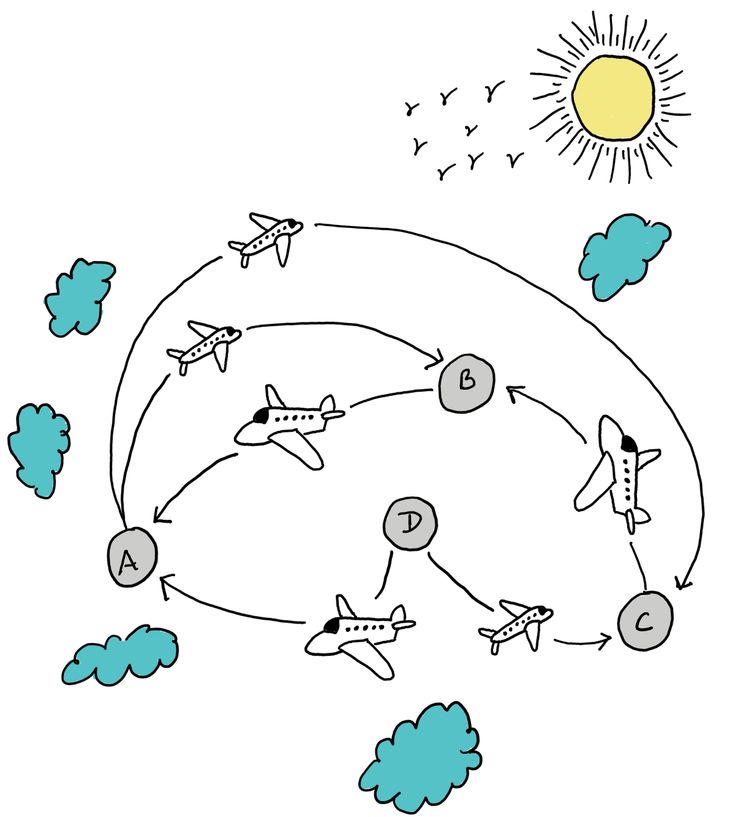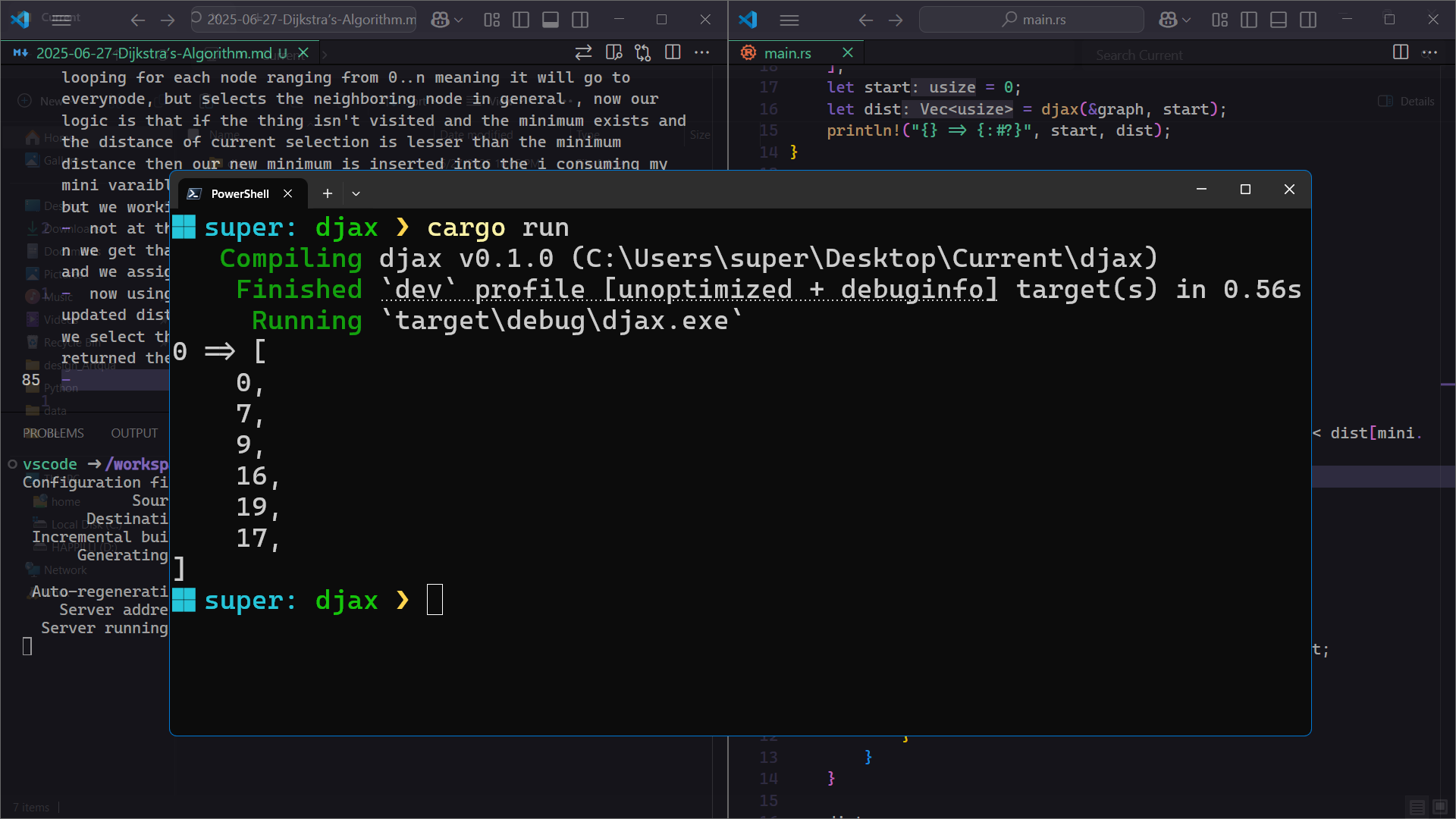Dijkstra's Algorithm
Shortest path algorithm using Dijkstra
Dijkstra’s Algorithm
Dijkstra’s Algorithm is a shortest path algorithm that is widely used to find the minimum cost path from a source node to all other nodes in a graph. It’s especially useful in scenarios like network routing, where optimal paths between routers must be computed. During my exploration, I came across the use of Dijkstra’s Algorithm in OSPF (Open Shortest Path First) a dynamic routing protocol that uses this algorithm under the hood to determine the most efficient routes.
What I Learned About this Algorithm
- Starts with the source node and assume all other nodes are at an infinite distance.
- Visit all neighboring nodes and calculate their distance from the source using:
new_cost = previous_cost + edge_cost - If this
new_costis less than the current stored cost, update it. - Continue this process until all nodes have been visited.
Example problem I took
graph LR
A((A)) -->|7| B((B))
A -->|12| C((C))
B -->|2| C
B -->|9| D((D))
C -->|10| E((E))
E -->|4| D
E -->|5| F((F))
D -->|1| F
For easier implementation, I calibrated the nodes for the vector: A → 0, B → 1, C → 2, D → 3, E → 4, F → 5
Program
We’ll use Rust to implement Dijkstra’s Algorithm due to its performance and expressive type system.
1
cargo new djax --vcs none && cd djax && code .
1
2
3
4
5
6
7
8
9
10
11
12
13
14
15
16
17
18
19
20
21
22
23
24
25
26
27
28
29
30
31
32
33
34
35
36
37
38
39
40
41
42
43
44
45
46
47
type Graph = Vec<Vec<(usize, usize)>>;
const INF:usize = usize::MAX;
fn main() {
let graph = vec![
vec![(1,7),(2,12)],
vec![(2,2),(3,9)],
vec![(4,10)],
vec![(5,1)],
vec![(3,4),(5,5)],
vec![]
];
let start = 0;
let dist = djax(&graph, start);
println!("{} => {:#?}", start, dist);
}
fn djax(graph:&Graph, start:usize)->Vec<usize>{
let n = graph.len();
let mut dist = vec![INF;n];
let mut visited = vec![false;n];
dist[start] = 0;
for _ in 0..n{
let mut mini = None;
for i in 0..n{
if !visited[i] && (mini.is_none() || dist[i]< dist[mini.unwrap()]){
mini = Some(i);
}
}
let u = mini.unwrap();
visited[u] = true;
for &(v, weight) in &graph[u]{
let current_dist = dist[u];
let updated_dist = current_dist+weight;
if updated_dist< dist[v]{
dist[v] = updated_dist;
}
}
}
dist
}
Explanation
- Node Mapping: Converted nodes A–F to 0–5 for simpler indexing.
- Graph Type Alias:
Graph = Vec<Vec<(usize, usize)>>, where each entry is a(neighbor, cost)tuple. Initialization:
- All distances set to
INFexcept the start node (0). - All nodes are initially unvisited.
- All distances set to
Relaxation:
- Select the unvisited node with the smallest distance.
- Visit its neighbors and relax the edges if a shorter path is found.
- Repeat until all nodes are processed.
Output
Here’s the output from the terminal:
It shows the shortest distance from node A (0) to all other nodes.

